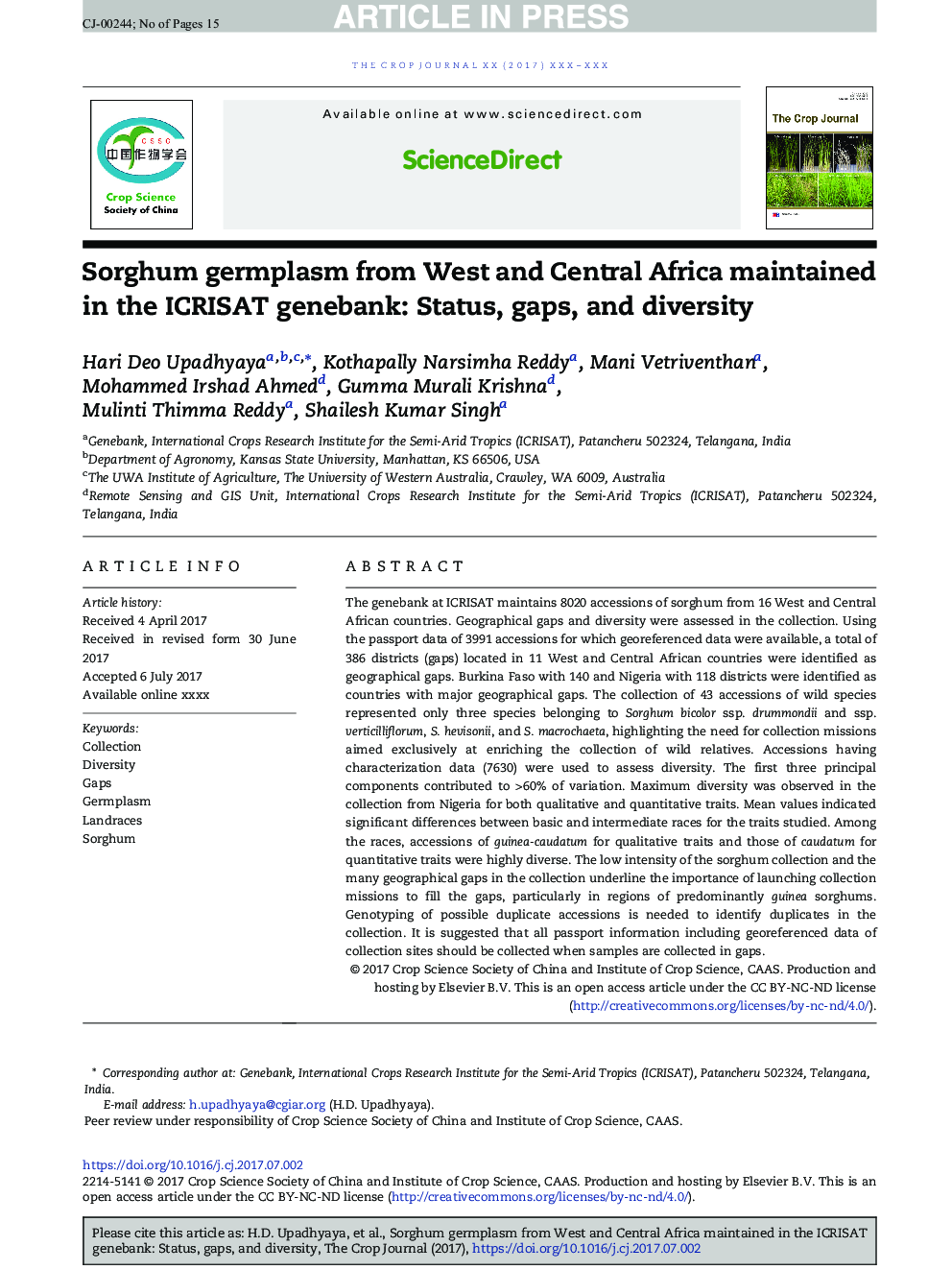| Article ID | Journal | Published Year | Pages | File Type |
|---|---|---|---|---|
| 8408823 | The Crop Journal | 2017 | 15 Pages |
Abstract
The genebank at ICRISAT maintains 8020 accessions of sorghum from 16 West and Central African countries. Geographical gaps and diversity were assessed in the collection. Using the passport data of 3991 accessions for which georeferenced data were available, a total of 386 districts (gaps) located in 11 West and Central African countries were identified as geographical gaps. Burkina Faso with 140 and Nigeria with 118 districts were identified as countries with major geographical gaps. The collection of 43 accessions of wild species represented only three species belonging to Sorghum bicolor ssp. drummondii and ssp. verticilliflorum, S. hevisonii, and S. macrochaeta, highlighting the need for collection missions aimed exclusively at enriching the collection of wild relatives. Accessions having characterization data (7630) were used to assess diversity. The first three principal components contributed to >Â 60% of variation. Maximum diversity was observed in the collection from Nigeria for both qualitative and quantitative traits. Mean values indicated significant differences between basic and intermediate races for the traits studied. Among the races, accessions of guinea-caudatum for qualitative traits and those of caudatum for quantitative traits were highly diverse. The low intensity of the sorghum collection and the many geographical gaps in the collection underline the importance of launching collection missions to fill the gaps, particularly in regions of predominantly guinea sorghums. Genotyping of possible duplicate accessions is needed to identify duplicates in the collection. It is suggested that all passport information including georeferenced data of collection sites should be collected when samples are collected in gaps.
Related Topics
Life Sciences
Agricultural and Biological Sciences
Agronomy and Crop Science
Authors
Hari Deo Upadhyaya, Kothapally Narsimha Reddy, Mani Vetriventhan, Mohammed Irshad Ahmed, Gumma Murali Krishna, Mulinti Thimma Reddy, Shailesh Kumar Singh,
